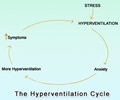Scientists have gathered evidence from a patient which reveals that the area of the brain that processes visual inputs can reorganize after an injury caused by stroke. Scientists found that a brain region that had stopped receiving signals from the eyes because of a stroke began responding to signals formerly processed in adjacent brain areas.
This finding demonstrates plasticity, the ability of a brain area to change its functioning, in the adult human brain. The finding will not lead immediately to treatments, but may eventually play a role in designing new therapies to aid recovery following stroke and brain injury, say the authors, whose study appears in the September 5 issue of The Journal of Neuroscience.“The results shed light on the ability of the adult human brain to reorganize itself and on the functional consequences of such reorganization,” says Shimon Ullman, PhD, of the Weizmann Institute of Science in Israel. “Considerable plasticity of the brain has been demonstrated in various animals and different brain regions, but relatively little has been known about such reorganization processes of the human visual system.” Ullman was not involved in the study.
Daniel Dilks, PhD, of Massachusetts Institute of Technology, and colleagues studied a 51-year-old man six months after he suffered a stroke. It damaged nerve fibers that transmitted information from his eye to one region of his visual cortex, which processes visual inputs, rendering him partially blind. The cortex itself was not injured.
Below the blind area, the subject reported that objects looked distorted. For example, when a square appeared just below the blind area, he perceived the square as a rectangle extending upward into the blind area. Testing conducted over a period of four years revealed that the cortex was responding to visual signals normally processed in the adjacent region, suggesting it had been reorganized.
“We discovered that it took on new functional properties, and he sees differently as a consequence of that cortical reorganization,” Dilks said.
Functional magnetic resonance imaging studies confirmed that the visually deprived cortex, which formerly responded only to information coming from the upper left visual field, was now responding to information from the lower left visual field.
Advertisement
Source-Eurekalert
LIN /J











